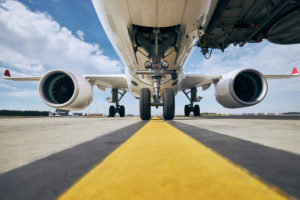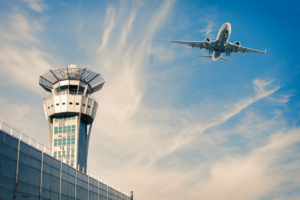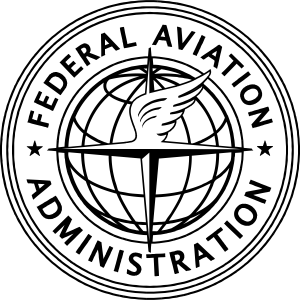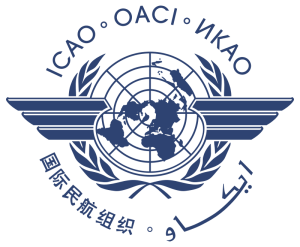As suppliers of airport lighting and power equipment to airports worldwide, we’re responsible for ensuring our products comply with the relevant regulatory bodies that enact strict standards on airport operations within their jurisdictions.
These regulatory compliance standards are in place to ensure airport safety, improve operational efficiency, and help minimize service disruptions. In this month’s blog, we break down the major players in airport compliance, starting with The International Civil Aviation Organization.
What Is The International Civil Aviation Organization (ICAO)?
At the top of most regulatory organizations is The International Civil Aviation Organization (ICAO). The ICAO is a specialized agency of the United Nations which sets international standards and regulations for aviation safety, security, efficiency, and environmental protection within its 191 member states.
ICAO Annex 14 to the Convention on International Civil Aviation’s Standards and Recommended Practices (SARPs) contains detailed airport lighting and power systems specifications. These standards provide the basis for national regulations maintained by many National Aviation Authorities (CAA).
The Role Of National Aviation Authorities (NAAs) In Regulatory Compliance
Although the ICAO sets international standards for airports, most countries have their own national regulatory bodies to serve their specific needs. These regulators, which number in the hundreds worldwide, are known as a National Aviation Authority (NAA) or a Civil Aviation Authority (CAA), depending on the country they regulate.
These bodies provide regulatory frameworks and standardized practices on a national level to ensure safety, efficiency, and reliability in civil aviation operations. They also ensure that airports within their borders comply with both international and national regulations, including alignment with ICAO standards, and often adopt international standards to suit national contexts.
Some of the more key localized airport regulatory bodies include:
Federal Aviation Administration (FAA)
The FAA regulates all aspects of civil aviation in the United States. This regulatory body provides advisory circulars with detailed guidance on designing, installing, and maintaining airport lighting and power equipment. The most widely recognized and followed FAA standards pertaining to our products are AC 150/5340-30 for airport lighting design and AC 150/5345-53 for power equipment.
Civil Aviation Safety Authority Australia (CASA)
CASA sets out the national airport standards for Australia, as well as many other South Pacific Island nations such as New Zealand. Standard AC 130.C-11 pertains to airport lighting infrastructure.
European Union Aviation Safety Agency (EASA)
Aviation safety within the European Union is regulated by the EASA, which establishes regulatory compliance frameworks and standards for various aspects of airport operation. Its Certification Specifications (CS) and Acceptable Means of Compliance (AMC) provide airport operators and maintenance teams with guidelines for airport lighting and power systems under standard CS-ADR-DSN:**.
Civil Aviation Authority of the United Kingdom
The Civil Aviation Authority oversees and regulates all aspects of civil aviation in the United Kingdom. CAP 168 Edition 12 details the standards for airport lighting, navigational aids, and electrical systems, among other aspects of airport operations in the UK.
Transport Canada Civil Aviation (TCCA)
Canada’s NAA, Transport Canada Civil Aviation, oversees all airport operations within Canada. The Canadian standards is TP312 5th edition set out the requirements for the physical characteristics, visual aids and technical services for aerodrome operators.
Take The Worry Out Of Regulatory Compliance With Airport Lighting Company
The relationship between the different governing bodies can be complex, and completing airport lighting and electrical infrastructure projects can be complicated enough without worrying about whether the products you buy comply with the relevant regulatory bodies.
All Airport Lighting Company products meet all necessary regulatory compliance, allowing you to order with peace of mind. Complete documentation is available right on our website: visit our Products page, navigate to the products you need, and click on the right to view their compliance information and Certificates of Conformance (CoC).
Our products meet all the standards set by the FAA, ICAO, and TP312 and are ETL-certified through third-party testing to ensure safe, reliable, and efficient performance. Airport Lighting Company engineers build our airport lighting and power equipment using the latest design and construction technology at our international manufacturing and distribution center. We also put each product through a multi-step quality control process, including hours of testing before any certification label is placed on the product.
The Airport Lighting Company team understands that safety and performance are non-negotiable when it comes to airport lighting and power equipment. That’s why when you partner with us, you’re assured of nothing but the best.
Read More: The Critical Role Of Airport Lighting In Aviation Safety
Call Airport Lighting Company For The Latest In Airport Lighting Technology
The Airport Lighting Company team is standing by to answer your questions about how our tech-based products can help improve the safety, reliability, and efficiency of your runways. Call 315-682-6460 for fast, friendly service you can count on.






